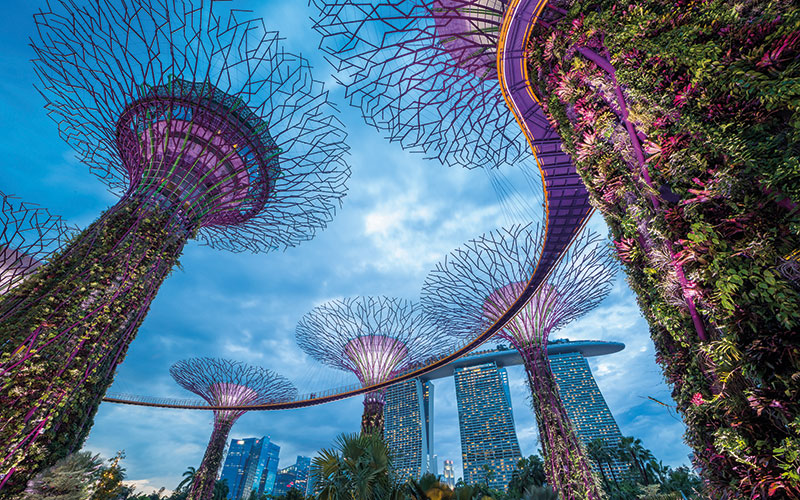Professor Anthony Rhodes and Dr Chooi Ling Lim discuss the COVID-19 spread and attempts to control the disease in Southeast Asia.

Malaysia and Singapore are located between the Indian Ocean, the South China Sea and the Pacific Ocean. The Malaysian Peninsular is often described as a microcosm of Asia, comprising the three most populous Asian ethnicities and cultures – Chinese, Indian and Malay. Singapore is a highly developed island nation linked to Malaysia by a causeway. It is renowned for its iconic buildings and more recently its super tree groves. It is one of the world’s wealthiest nations, with excellent health and public services, and world-leading universities and research and innovation centres.
The outbreak in Singapore
Shortly after the Chinese New Year, on 23 January, Singapore reported its first case of coronavirus in a tourist arriving from Wuhan. Singapore was quick to mobilise health checks and travel restrictions at airports and carry out extensive testing of suspected cases, in addition to contact tracing, with contacts confined to their homes until cleared of infection.
This system worked well until the middle of March, which coincided with the time when globally the seriousness of the disease was beginning to dawn, and when countries started urging their citizens to return. Thousands of Singaporean citizens returned home, with more than 500 carrying the virus. At this time, it was mandatory for returning citizens to stay at home for two weeks.
However, other people in the same households were free to carry on their lives as normal. The daily numbers of new cases in Singapore had been low, but by mid-March they increased dramatically, with the majority being linked to imported cases and for the first time not all cases were easily traced. Only recently has it been realised that asymptomatic spread could be a main driver of transmission. Now, all new arrivals in Singapore are sent directly to government quarantine. With the number of people entering the country drastically reducing, so has the number of imported cases. However, during the first weeks of April the cases in Singapore dramatically increased, coming predominantly from densely packed dormitory accommodation for migrant workers, from countries such as Bangladesh, India, Thailand and Myanmar, working in the construction, shipping and maintenance industries that require a large and low-paid labour force.
Please click here to read the full article
Please click here to read all the Science articles from The Biomedical Scientist




